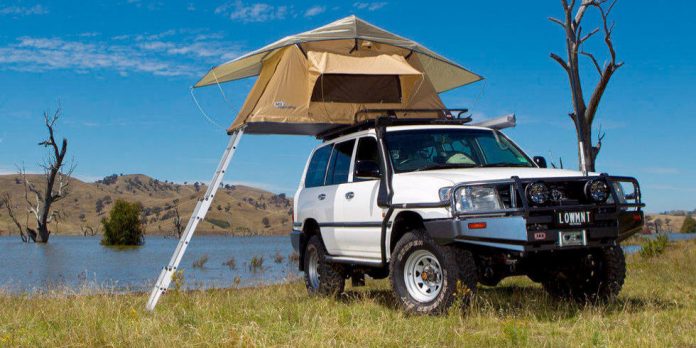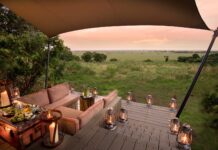The safari offers you the opportunity to explore the stunning landscapes, diverse wildlife, and rich cultures of Tanzania at your own pace. The northern circuit routes offer some of the world’s most diverse safari experiences, consisting of National Parks, game reserves, conservation areas and private concessions. We visited the world-famous and iconic Serengeti National Park and Ngorongoro Crater, and of course their less well-known neighbours, Tarangire National Park and Lake Manyara National Park.
A self-drive adventure through Tanzania with 4×4 rooftop tent offers the chance to discover the stunning sceneries, Big five animals and cultures of Tanzania on your own, at your own pace with a 4WD Land Cruiser of Toyota standing high for its comfortability.
The drive started from Arusha to Lake Manyara to Tarangire to Ngorongoro conservation area and finally to Serengeti national park. With our 4×4 rooftop tent car service, there was no need to worry because we could sleep any where as long as there was security. We had full control of the 4×4 land cruiser which gave us the pace to move on.
After a day in Arusha, we drove to lake Manyara national park known for flocks of thousands of flamingos that feed along the edge of the lake in the wet season. Great white pelican can also be present in large numbers. The groundwater forest to the north of the lake, and largely within the National Park, is a well-known breeding site for thousands of pink-backed pelican and yellow-billed stork along with smaller numbers of Marabou stork and grey heron.
The Treetop Walkway allowed us to have a thrilling sky-high adventure straight through the forest. This 370 m air walk, let us to walk right among the treetops, giving us a bird’s eye view of the forest. The treetop walkway starts right from the short board-walk and eventually rises in altitude leading to a series of suspension bridges with secure netting on either side. It is Lake Manyara that we had the chance to see tree climbing lions that we up in the fig trees sleeping and others locating for the next meal.
We arrived at Tarangire national park famous for its high density of elephants and baobab trees. We had chance to visit the park in the June to November dry season and we were able to see large herds of thousands of zebra, wildebeest and cape buffalo and other common resident animals include water buck, giraffe, dik-dik, impala, eland, Grant’s gazelle, vervet monkey, banded mongoose, and olive baboon on our game drive. Predators in the park include lion, leopard, cheetah, caracal, honey badger, and African wild dog.
It was an excellent place for bird watching, with more than 550 species recorded in Tarangire. These species include buzzards, vultures, herons, storks, kites, falcons and eagles. The park is also famous for the termite mounds that dot the landscape.
We also had a chance to visit and experience a Masaai village with numerous ancient paintings, in neighbourhood with Kolo Masai people are nomadic pastoralists and have very unique ways of living with cultural aspects we enjoyed to learn about, the Masai also have very unique dressing code.
On our last day to the park, we continued and camped next to the Ngorongoro conservation area. This gave us very good morning views of the Ngorongoro in our rooftop tent as we prepared ourselves to visit the Ngorongoro crater.
The game drive was without doubt the best way to view wildlife in the Ngorongoro Crater. The crater is the best place to spot all the 5 of Africa’s famous mammals lions, rhinos, leopards, elephants and buffaloes. Other animals found within the crater include hippos, jackals, reed buck, water buck, wildebeest, warthogs, hartebeests, servals, zebras, cheetahs and crocodiles. The first day gave us a hint of what we would do next in the same area. Since we had maximized the wildlife sighting, we had to go back again for a photo safari.
A photographic safari was not only about the animals but also birds, lakes and savanna vegetation. There are Maasai tribesmen living close to the crater who were open to be part of our photography expedition. It was amazing and everlasting safari.
Our next camp was in the Serengeti national park which was very perfect for the morning views as the sun rose. An early morning drive was the best way to see big 5 and other resident creatures. Animals in the Serengeti are very active in the morning and evening hours. The drive started at sunrise and ended at around 11: am. It gave us the chance to spot nocturnal animals retreating back to their holes/dens as well as observing herbivores going out to graze.
Our game drive was strategic taking us to the north where the Mara crossing was to witness the annual migration of the wildebeest as they go through great challenges and have to evade predators like lions, hyenas, leopards and wild dogs. It is a crocodile infested river with the high current troubling their crossing but they have no option apart from giving it a try.
We had an opportunity to go for a hot air balloon very early in the next morning with a great aerial view of the plains and the animals that roam it. We had to book the safari in advance and in groups of 16 people. It also gave us a second chance to witness the wildebeest migration while in the skies. The safari ended with champagne breakfast in the African wilderness.
We had the opportunity to visit the Olduvai Gorge also known as the “cradle of mankind” because it is where the very first human remains where excavated by the Leakey family. The tools that were used in the research by the Leakey family and human remains were seen from a small museum in the facility. We now had to end the safari and drive back to Arusha for our final flight back home.





